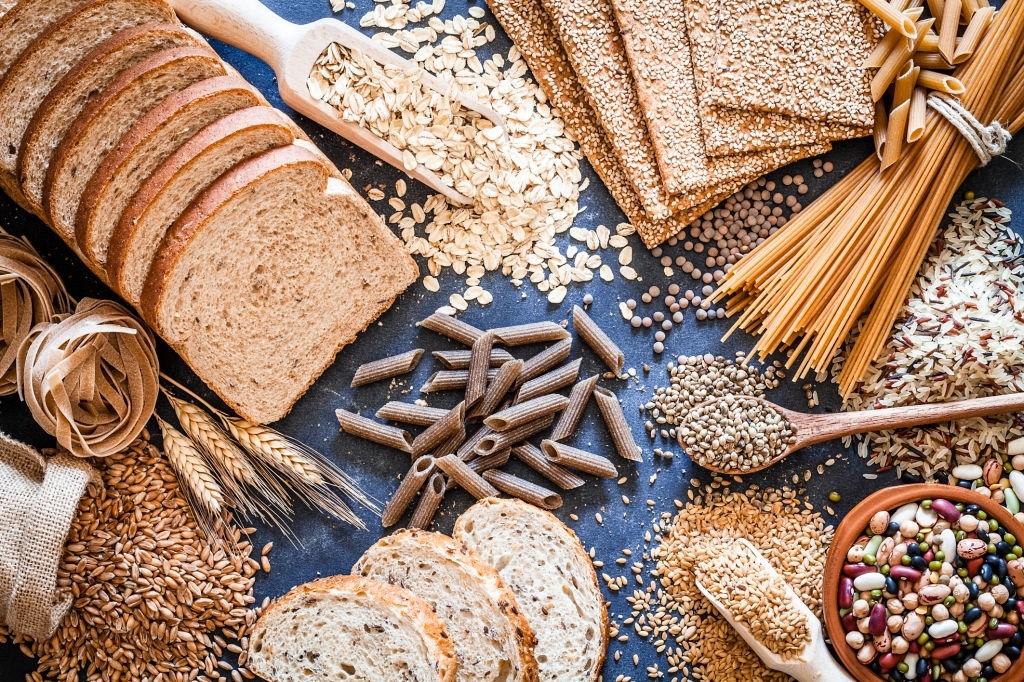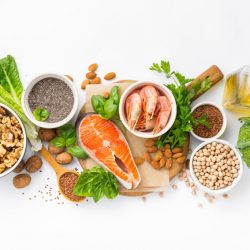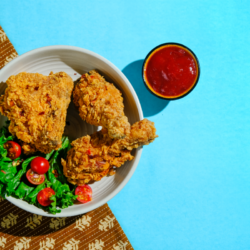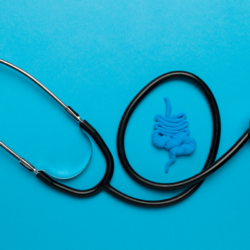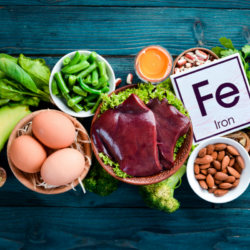Formerly called “carbohydrates”, carbohydrates are a category of nutrients that include simple sugars and complex sugars. These sugars are partially digested in the mouth, subject to good chewing, before reaching the small intestine.
From Carbs to Glucose:
To be usable by the body, carbohydrates are converted into glucose during digestion. The glucose then passes through the blood to the liver, which takes some of this glucose for its own functioning. The rest is redistributed by the blood and used as an energy source by the cells of the body.
Excess glucose that has not been used by the liver or the body’s cells is stored as glycogen in the liver and muscles for possible future use.
At the cellular level, glucose enters cells thanks to the insulin produced by the pancreas. It will then undergo a series of transformations called “Krebs cycle” in the mitochondria present within each cell. At the end of the Krebs cycle, the transformed glucose can then be used for energy (ATP).
From glucose to reactive hypoglycemia:
When we eat a meal rich in carbohydrates, the level of glucose in the blood will increase. The pancreas will then secrete insulin into the blood system. This hormone will reduce the level of glucose in the blood and cause reactive hypoglycemia. It is for this reason that after a big breakfast rich in sugars, we have a stroke of the pump around 10 or 11 am with an irrepressible desire to nibble on sweet!
In other words, insulin is primarily a storage hormone, which will store excess carbohydrate calories in the form of fat. The faster the absorption, the higher the glycemic peak, and the lower the satietogenic power.
Removing sugars in the morning helps revive the pancreas and maintains our insulin, and fasting from time to time purges our insulin and avoids becoming diabetic.
Note that carbohydrate intakes are important in the event of prolonged effort, and that a reasonable dose of sugar allows the body to function properly so that each cell has enough energy to fulfill its role.
The glycemic index (Ig):
The glycemic index (Ig) classifies foods according to the rise in blood sugar that they produce when they are eaten.
The higher their index, the more they cause a rapid rise in blood sugar.
The Ig value is only valid for foods consumed alone.
The foods we eat do not all have the same sugar content. As a result, they do not bring the same level of glucose in the blood, and therefore of insulin.
The glycemic index (Ig) of foods breaks down into 3 categories:
- Foods with a high Ig (> 70), such as white sugar, sweets, jams, bread, white rice, refined pasta, breakfast cereals, corn starch, fast food, chips, sodas, juices, etc.
- Foods with medium Ig (between 55 and 70)
- And those with low Ig (<55)
Examples of medium and low Ig foods: whole or semi-complete pasta or rice, legumes, whole fruits and vegetables.
The more a food undergoes industrial transformation, the more its Ig increases / The more a food contains vegetable proteins and fibers, the lower its Ig.
Products with a high glycemic index ingested at the end of a meal require less insulin to be assimilated by the cells. Thus, diabetics can consume it from time to time, but above all should not consume sugar at the start of a meal.
Fruits, on the other hand, produce more insulin than vegetables. Diabetics will therefore have to increase their consumption of vegetables and decrease that of fruits.
Concept of nutritional density:
Nutritional density is the richness in micronutrients of a food (vitamins, minerals, fatty acid, etc.). Certain foods undergo a suppression of their nutrients during production processes (breakfast cereals, unbelievable rice, etc.). These are called empty calories (all that’s left is fast sugars!)
The High Authority for Health (HAS) recommends consuming foods with a high nutritional density (legumes, wholemeal bread, dried fruits, etc.) at least 3 times a week for lunch!
Some naturopathic advice:
- Choose unrefined sugars and grains and consume them in small amounts (brown sugar, agave syrup, honey, whole grain bread, brown rice, etc.)
- Check food for Ig, especially for diabetics and overweight people
- Here is a tip: Agave syrup can be sweetened in the same way as honey, and, if it is of good quality, its glycemic index is a little lower.
- Avoid foods with no real nutritional value, because they promote inflammation, acidify the body and cause more fat storage
- Limit foods containing gluten if possible
- Avoid eating sweet foods at night, as insulin works on a circadian rhythm and does not work at night. Running it at night may prevent lipolysis
- To know :
- Maturation or cooking can change the Ig of a food
- Lactose is a quick sugar (milk, yogurt, cottage cheese, etc.)
- Be careful with 0% cottage cheese: the fat is replaced by acidifiers, the acid-base balance may be unbalanced and prevent weight loss.
The role of carbohydrates in the body:
The role of carbohydrates, like lipids, is essentially energy. The French population consume an average of 40 to 50% per day while the recommended daily allowance is around 10%. Namely that 100% of excess weight is due to poor carbohydrate management.
In the event of a deficiency, the organism has the capacity to adapt by synthesizing glucose from non-carbohydrate substances (creation of glucose by gluconeogenesis), conversely, in the event of excess carbohydrate intake, l The body transforms it into triglycerides stored in adipose tissue (hence the formation of cellulite).
There are 2 kinds of carbohydrates:
- Oses (monosaccharides): Simple non-hydrolyzable carbohydrates also called “fast sugars” (high Ig)
- Osides: Hydrolyzable complex carbohydrates also called “slow sugars” (low Ig)
Daily carbohydrate recommendation:
- Morning (slow sugars with good nutritional density): Wholemeal or grain bread
- Noon (slow sugars): Legumes, rice, pasta
- 16 H (fast sugars of good nutritional density): Fruits or dried fruits
- Evening: No starches or carbohydrates
We recommend that you have a blood test once a year in consultation with your doctor. On an empty stomach, a so-called “normal” blood sugar level should be between 0.60 and 1.10 grams of glucose per liter of blood. If your glucose level is below 0.60g / l, the result can be interpreted as hypoglycemia. On the other hand, if it is greater than 1.10 g / l, the result can be interpreted as hyperglycemia. Be careful, blood sugar can vary in people with diabetes.

